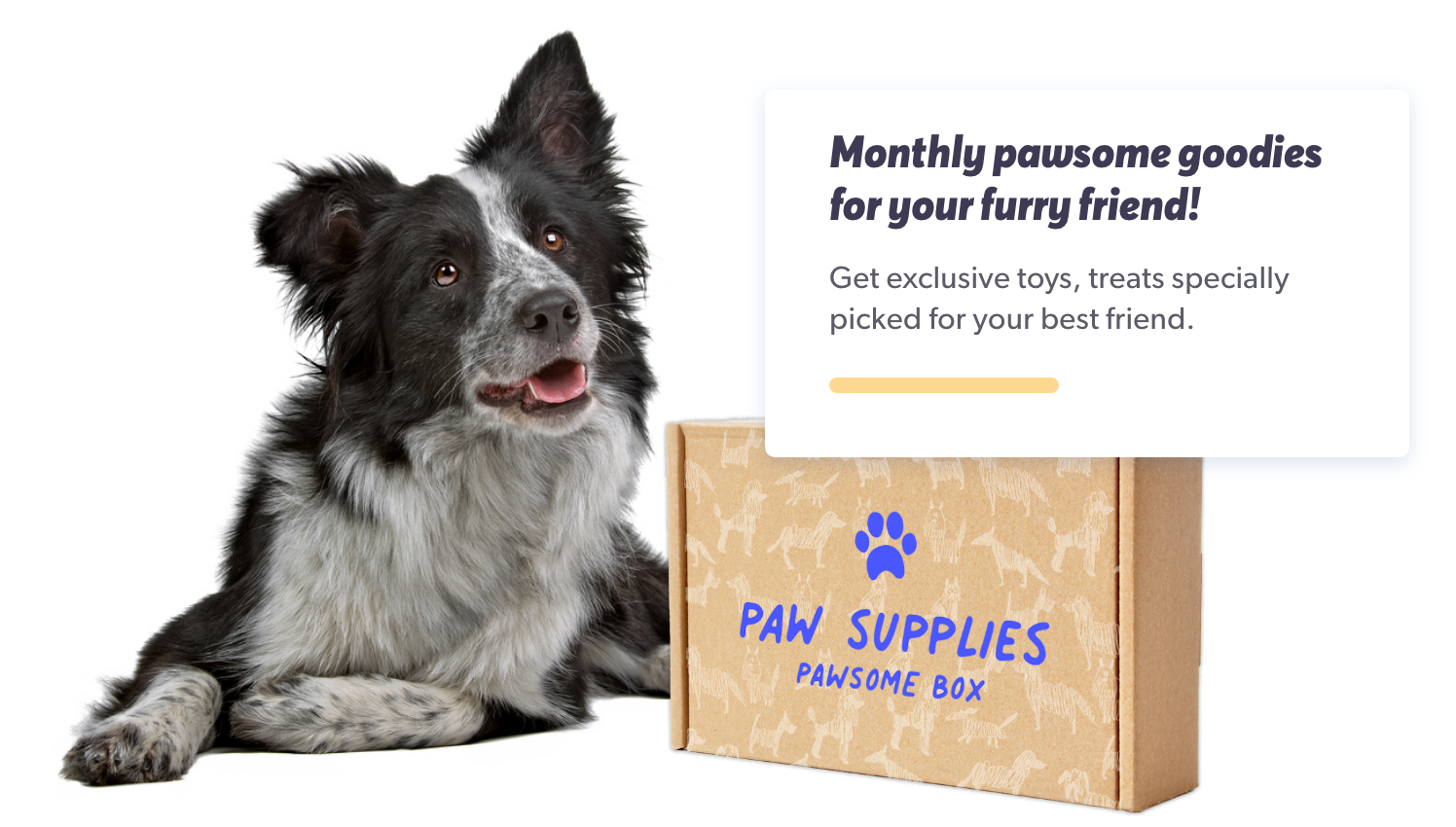By Vanessa Loughty | May 18, 2023

See why top ecommerce brands use Miva’s no-code platform to run
multiple stores, manage massive catalogs, and grow their revenue.
In part one of our blog series about developing an online pet product business, we gave an overview of the challenges, customers, and industry dynamics of one of the most rapidly growing segments in ecommerce. However, setting up the store is just one facet of a successful pet-related business online. Your next challenge will be to master pet product marketing, in order to connect customers with the products they (and their pets) are seeking. In this blog, we’ll explore the nuances of pet marketing, helping you to fine-tune your ecommerce strategy for connecting with different pet-loving audiences effectively.
The first step in successful pet product marketing is understanding the motivations of your customers. This is no easy feat when a full third of all pet products will be purchased online in the coming years. Many of those purchases are for every day pet necessities like dog and cat food, toys, and accessories like leashes and food bowls. Retail consumers also shop for pet-related gifts, keepsakes, and wild contraptions to make their pets’ lives more enjoyable (mega pet supply retailer Chewy stocks more than 400 types of carpeted cat condos). Marketing to this audience needs to reflect the important role that pets play in people’s lives, and help shoppers feel good about investing in the health and happiness of their animals.
If you're wondering how to market dog food or other pet supplies to a retail audience, a great rule of thumb is to focus on the unique benefits each product offers. Is your dog food made with all-natural ingredients? Do your pet toys offer durability unmatched by competitors? Will purchasing in bulk save pet owners time and money? Are some products specifically engineered for unique species or breeds? Highlight these points in your product descriptions, emails, paid ads, and even site category names/organization to appeal directly to retail shoppers' motivations.
Just as in other industries, B2B pet supply buyers have unique shopping needs, requiring a different pet marketing approach. These buyers are often interested in bulk orders and may prioritize factors like pricing, product availability, and shipping logistics. These features can actually be an important component of successful pet brand marketing to B2B buyers. Not only should your ecommerce platform be customized to facilitate features like quick order forms, automatically displayed wholesale/account-based pricing, and real-time order shipment tracking, you also can get great results by using these features as selling points when marketing your brand. The effectiveness of the shopping experience itself is an excellent theme when marketing to B2B buyers, and will help set your store apart from the competition. Read more about effective B2B marketing here.
Making sure that potential customers can find your store is just as important as what you put in it.
Keywords for pet products, when used strategically, can boost your pet supply site’s visibility online. As this industry is very competitive, you may find that ranking for common pet-related terms is difficult. When looking for keywords to target, consider using more specific category and product-related words which directly reflect your product offerings (think “studded leather dog collars” vs. more general and competitive keywords like “pet supplies”).
Technical SEO is also very important for search ranking and should be a part of any marketing strategy—we wrote more about how to configure sites for technical SEO here.
Pet product marketing starts with one very unique challenge—the “dual-audience” nature of products: humans making purchases, but pets using the products. This demands an empathetic, solution-focused approach to understand both human buyers and pet users. Standing out from rising competition, making sure regulatory messaging is accurate, and meeting consumer demand for personalized products all add even more complexity when crafting a pet marketing strategy. Here are 8 areas that effective pet product marketing efforts need to address:
1. The “Dual-Audience” Dilemma: Achieving satisfaction in both human buyers and pet “end-users” at the same time can be complicated. Effective pet marketing needs to express solutions for both.
2. Rising Competition: Numerous brands are vying for market share in this competitive industry. A polished, relevant, and fast ecommerce site can be a strong brand differentiator.
3. Demand for Customization: Consumers seek personalized products for their pets, but all ecommerce shoppers benefit when a website is personalized for their specific shopping needs.
4. Product Quality: Animal owners and business place a premium on the wellbeing of pets. This leads to a heightened demand for safe, quality products, including increasing demand for eco-friendly, organic items.
5. Regulatory Issues: Complying with changing animal product safety regulations, which may be different in different locations, is both a service and selling point for customers—marketing content can highlight compliance as a positive feature of the shopping experience.
6. Product Education: Educating consumers about product benefits and usage is a great way to drive conversions and an excellent basis for marketing campaigns.
7. Price Sensitivity: Balancing quality and affordability is central to most types of ecommerce selling, and can be a great subject for effective marketing in this segment.
8. Maintaining Brand Loyalty: Marketing materials don’t just drive today’s sales—they also become part of a total brand presentation which can add to customer loyalty and generate repeat purchases in a very saturated market.
With 261 billion in global 2022 sales, the pet supply industry is fiercely competitive, making it crucial for your pet care marketing strategy to highlight what sets your business apart. Maybe it's your commitment to sustainability, your exceptional customer service, or your innovative products. Whatever your best brand, site, and product attributes are, make sure they’re front and center in your pet product marketing efforts.
Whether you're starting a pet supply business or looking to improve your existing one, effective pet product marketing can help you connect with your target audience and grow your business. Keep in mind that pet marketing isn't a one-size-fits-all approach. It requires a deep understanding of your different types of customers, a keen eye for industry trends, and the ability to leverage ecommerce features as brand differentiators which make your customers’ lives easier. With these elements in place, you're well on your way to creating an ecommerce experience for your customers that’s worthy of all the treats.


Katy Ellquist, Miva’s Digital Marketing Strategist, is an accomplished writer, marketer, and social media analyst who has created sophisticated content campaigns for a broad range of professional clients. She brings to Miva a complex understanding of ecommerce trends and techniques, building upon extensive digital agency experience and a prior role as direct liaison to Miva’s top accounts. Katy is a regular contributor to the Miva blog, covering essential ecommerce topics like design & development strategy, site optimization, and omnichannel selling, with the goal of increasing the actionable knowledgebase of the entire Miva community.
Love it? Share it!
No worries, download the PDF version now and enjoy your reading later...
Download PDF Vanessa Loughty